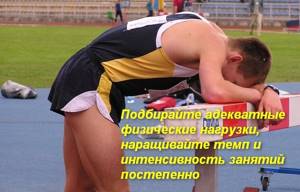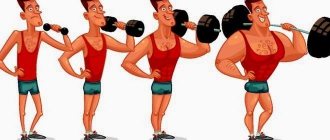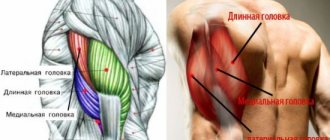Causes
There are 2 groups of causes of nausea. The first group is associated with disorders of the digestive system. These can be inflammatory diseases, motility disorders, tumors, food poisoning. In healthy people, nausea may occur due to overeating or after eating foods that are too difficult to digest. As a rule, in this case, a person not only feels sick, but also experiences abdominal pain, abnormal bowel movements, vomiting and belching.
Another variant of the appearance of nausea is central, associated with disruption of the brain, where the vomiting center is located. In this case, nausea may occur due to a traumatic brain injury, decreased blood flow in the brain, or insufficient supply of nutrients to the nerve cells. Such nausea is accompanied by dizziness, headache, blurred vision, and confusion.
Peculiarities!
Nausea or vomiting in diseases of the gastrointestinal tract is considered as a protective reaction that helps the body get rid of poor quality or heavy food. Central vomiting does not have a protective function, and it is much more difficult to cope with.
After intense exercise in the gym, the mechanism of nausea varies depending on its cause. Sometimes nausea during exercise is not at all related to physical activity, but occurs for another reason.
Preventing nausea
A sudden attack of nausea can happen to anyone. But there are a number of tips that help not only prevent, but also stop an attack during or after training.
- Drink plenty of fluids (preferably clean water). It cools the body and thins the blood, relieving overheating.
- The use of dietary supplements and herbs to strengthen the immune system reduces the risk of colds, increases endurance and negates the risk of overtraining.
- Preventing stomach diseases also reduces the risk of nausea. This is especially true for those who naturally have high acidity.
- Keeping a diary helps to correctly determine possible loads.
- Balanced nutrition, at least on training days. If you eat fried potatoes with meat and go to exercise, there is a high probability that you will feel ill.
If you feel nauseous after a workout and you don’t know what to do, drink clean water first. Use other measures that apply in this case.
Prolonged, incessant nausea can be a sign of gastritis or ulcers. Be sure to visit a gastroenterologist and therapist!
News Media2
What makes you sick after a workout?
Why can a person feel nauseous after or during training? Let's look at the most common causes and rules of first aid.
Pressure
During sports activities, stress hormones are released into the blood, which cause vasospasm and increased blood pressure (BP). After completing the workout, the hormonal levels stabilize, the blood vessels dilate, and blood pressure gradually decreases. If all these processes occur too quickly, then sudden changes in pressure disrupt blood flow in the brain.
Both increases and decreases in blood pressure can be accompanied by similar symptoms. The person begins to feel sick, vision becomes blurred, the head may become dizzy, and mental fog appears. In this case, you need to sit him down or lay him down, give him a drink of water, and measure his pressure. For high blood pressure levels, the first aid drug is captopril, which must be dissolved in the mouth. If the first aid kit is not available, then you just need to sit quietly for a while. If the pressure does not decrease, you will have to call an ambulance. If your blood pressure is low, you can drink a cup of coffee or strong black tea.
Important!
Never give any medication before taking your blood pressure. The symptoms of hyper- and hypotension can easily be confused and the problem can be aggravated by inadequate treatment.
Bad feeling
Sometimes a person comes to the gym already feeling a little unwell. Its causes may be lack of sleep, fatigue, the onset of a cold, or premenstrual syndrome in women. During physical activity, the malaise intensifies, nausea, weakness, headache appear, and body temperature may rise.
It’s best to skip training if you’re feeling unwell; it won’t give the desired effect anyway. If you nevertheless came to class, but felt faint during the exercises, then you need to complete the training. Sit for a while, drink water and go home only after your condition improves.
Gastrointestinal tract overload
It’s not for nothing that experts recommend eating no later than 2 hours before training. The fact is that during physical activity the sympathetic nervous system is activated, which stimulates breathing, increases heart rate and increases vascular tone. The parasympathetic system, which is responsible for the normal functioning of the gastrointestinal tract, is in a depressed state during training.
For this reason, digestion processes suffer; food is not evacuated from the stomach for a long time. And exercises, including bending, jumping, and lifting weights, contribute to the development of reflux - the reverse movement of food through the gastrointestinal tract.
If such a problem arises, you need to pause, sit quietly (but not lie down) for a while until the nausea and feeling of fullness in the stomach go away. If you have enzyme preparations with you (mezim, Creon), you can take them with a small amount of water.
Not enough water, salt
Nausea occurs when the water-salt balance is disturbed, as this leads to thickening of the blood and decreased blood flow to the brain. During exercise, the athlete actively sweats, losing fluid and electrolytes. A lack of water and salt, amounting to 2-3% of normal values, is easily compensated by the body, but if their deficiency exceeds 5%, then unpleasant symptoms occur. A person feels dizzy and has a headache, feels nauseous, feels weak, has severe dry mouth and thirst.
In this case, you definitely need to sit down and drink not just boiled water, but mineral water without gas. In severe cases (when convulsions occur), special drugs for oral rehydration are needed - rehydron, gastrolit. You need to drink little by little - the stomach can reject a large volume of liquid.
Not enough blood sugar
During intense physical work, there is an active consumption of carbohydrates, the simplest and most easily digestible version of which is glucose. However, it is necessary not only for muscle contraction, but also for brain function. If a person comes to exercise on an empty stomach, without having a carbohydrate snack, then the glucose reserves are quickly used up by the muscles, and the brain remains “hungry”. It takes time to mobilize glycogen, and the need for carbohydrates is already “here and now.”
In addition to nausea, hypoglycemia causes an acute feeling of hunger, weakness, trembling in the hands, and tachycardia. This condition is treated simply - you need to eat candy, lollipop, some fruit or drink sweet tea. You will feel the effect very quickly.
Overheating
During strength training, the body releases large amounts of heat energy. Normally, these losses should be compensated by the evaporation of sweat from the surface of the body, which provides some cooling. If the gym is too stuffy, hot, and there is no air conditioning, then the thermoregulation process fails and heat stroke occurs.
Note!
Overheating is also facilitated by thermal suits and fat-burning thermogenic drugs, which are sometimes abused by people trying to lose weight faster.
Overheating is accompanied by nausea, vomiting, fever, confusion, or loss of consciousness. In case of heatstroke, a person is laid down, tight clothing is unbuttoned, and cold compresses are placed on the forehead and chest. In the room you need to open the windows or turn on the air conditioners. If the patient is conscious and can move independently, then it is advisable to take a cool shower (18-20 °C). If you are in serious condition, lack of consciousness, or have uneven breathing, you should immediately call an ambulance.

Reduced blood flow in the gastric mucosa
The decrease in blood supply to the stomach during training is associated with the redistribution of blood in the body. Its main volume goes to the skeletal muscles, the remaining part is distributed between vital organs - the brain, heart, kidneys. The digestive organs at this moment may suffer from a lack of blood and, accordingly, oxygen and nutrients. The situation is aggravated by the wearing of special belts by weightlifters, which additionally compress the blood vessels.
With a pronounced decrease in blood delivery to the gastric mucosa, nausea and pain in the epigastric region occur. There can be only one help here - stopping training so that the blood is distributed evenly again. In the future, the intensity of the load will need to be reduced and the use of a weightlifting belt will need to be abandoned.
Other factors
Third-party factors include diseases and conditions not related to sports training. Nausea is caused by:
- Poor nutrition;
- Inflammatory diseases of the digestive system;
- Benign and malignant neoplasms;
- Functional disorders of the gastrointestinal tract;
- Endocrine diseases (thyroid, adrenal glands, pituitary gland);
- Metabolic disorders (diabetes mellitus, liver, kidney failure);
- Brain diseases (trauma, stroke, multiple sclerosis, parkinsonism);
- Pathology of the inner ear, in which the vestibular apparatus is located;
- Cardiac ischemia.
In almost all of these cases, it is necessary to consult a doctor to select adequate treatment. In case of exacerbation of the listed diseases, heavy training is contraindicated. You can limit yourself to elements of physical therapy.
General information
Why do athletes sometimes feel sick the day after training? There are three main reasons why this happens:
- Overtraining.
- Dietary errors.
- Insufficient recovery.
“Overtrained”
The most common cause of poor health. As a rule, it occurs not in beginners, but in professional athletes. In an attempt to perform a WOD complex in less time, lift more weight, or master a new movement, our body experiences stress for which it was not initially prepared.
Stress leads to the effect of overtraining. And if for beginners this process occurs almost painlessly, since their body is still adjusting to the loads and has time to adapt to them, then for experienced athletes, overtraining is much more severe.
It is because of this that most of the unpleasant side effects occur:
- Nausea;
- Loss of consciousness;
- Muscle pain;
- Heartache;
- Headache;
- Insomnia.
In order not to suffer from overtraining, it is enough to train exclusively according to the plan. A trainer or a special diary with results will help you with this, which you need to focus on during each training session.
Nutrition

The second reason for feeling unwell after training can be poor nutrition.
There are several cases when dietary errors affect your well-being:
- Poisoning or overload of the digestive system. In this case, the body does not have time to digest all the food before training, then under the influence of physical activity the food becomes toxic to the body and causes poisoning.
- Insufficient consumption of certain nutrients. Thus, a lack of carbohydrates reduces blood sugar levels, which during the training process can lead to exhaustion and other consequences.
- Incorrect, unbalanced diet. For example, with hyper-consumption of complex proteins, all systems are stressed, including the kidneys and liver. In this case, training will become a trigger that will trigger organ failure and other unpleasant consequences.
Recovery
And the last reason is lack of recovery. The human body functions normally and grows in strength only if:
- a full 8 hours of sleep;
- break between critical loads of 36 hours.
- absence of nervous stress;
- proper balanced nutrition.
Preventive measures
To avoid nausea while exercising, try to follow the basic rules:
- Have a snack a couple of hours before class with light food that does not stagnate in the stomach for a long time (porridge, fermented milk products). It is better to avoid fatty meat dishes.
- During your workout, periodically take a few sips of still mineral water at room temperature.
- Exercise only in a cool, well-ventilated area.
- For training, choose loose, breathable clothing that does not interfere with normal sweating.
- Do not neglect warming up and cooling down, they will help to avoid sudden changes in pressure.
- Select adequate physical activity, increase the pace and intensity of exercise gradually.
- Do not use dubious means to quickly achieve results (thermogenics, weightlifting belts, thermal suits). Remember that health is more important.
You need to take care of your health. The appearance of nausea serves as a signal to the body that its functioning is impaired. Therefore, first of all, you should understand the reasons for this condition, and then take all possible measures so that it does not recur in the future and does not disrupt the training process.
Don't overdo it in the gym!
The desire to become bigger and stronger drives men to lift more and more weight during exercise. This contributes not only to micro-tears in muscle tissue, which subsequently leads to muscle growth, but also to the production of the unhealthy hormone cortisol. Otherwise, this hormone is called the stress hormone, and its excess leads to the fact that you will feel bad even with excellent health, from a medical point of view. Trainers around the world recommend not to overdo it, as "more" does not mean "better" when it comes to strength training results.
Even professional bodybuilders know when to stop and train, albeit often, but with lighter weights or a small amount of time. Don't sacrifice your body and don't put it on the embrasure of beauty. Exercise no more than three to four times a week, and you can devote one workout to aerobic exercise.
Incorrect exercise technique
You can master the technique of handling dumbbells or a bar, but if you don't breathe correctly, you'll give yourself a migraine or nausea after a workout. Anaerobic exercise requires not only correct positioning of the legs and back, but also rhythmic inhalation and exhalation.
Many professional athletes and ordinary gym goers suffer from the fact that they simply do not know how to breathe. As a result, the entire strength exercise is performed in one breath. Why do you feel nauseous and dizzy after training? Review your breathing technique while doing the exercises. Think not only about keeping your back locked or keeping your knees in line with your toes, but also about inhaling and exhaling rhythmically. You will see that, firstly, you will have more strength during the session, and secondly, you will feel cheerful after finishing the workout.












